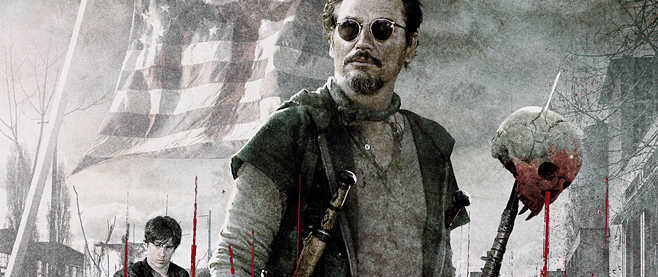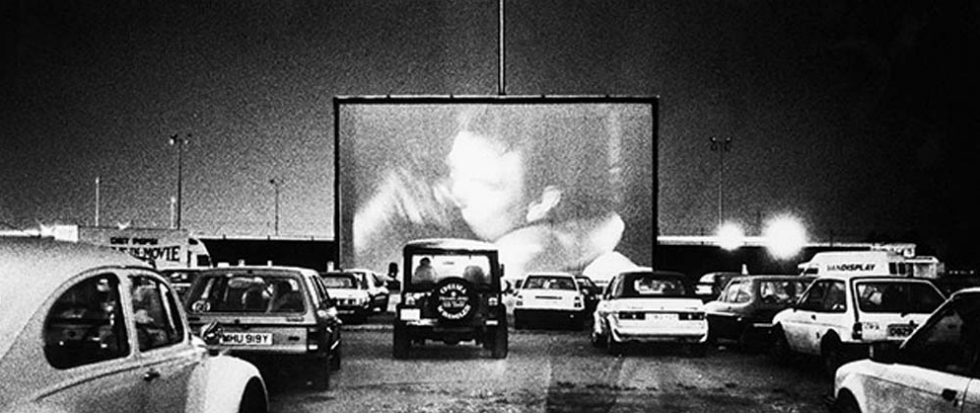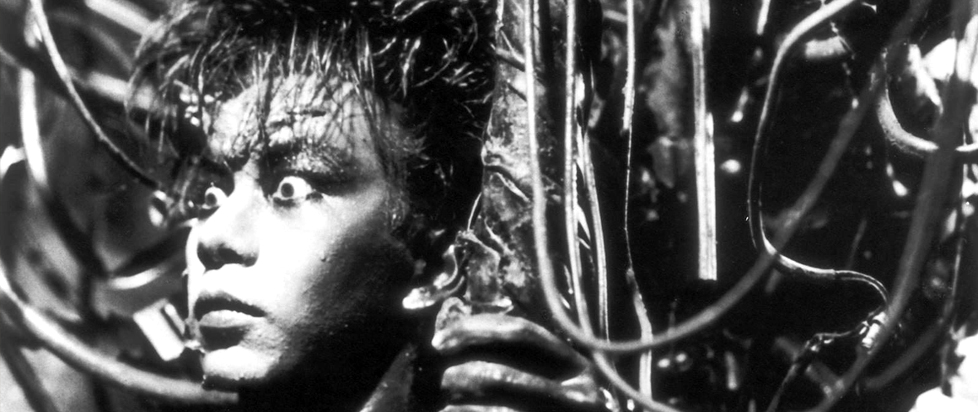
Your Future is Metal: The Industrial Nightmares of Shinya Tsukamoto
“Our love can destroy this whole fucking world.”
Ever since I was just a wee little infant film nerd, people have been telling me that I need to see Tetsuo: The Iron Man but, for whatever reason, I never did. Back when I worked at a video store fresh out of college, I remember A Snake of June coming out and I wanted to see it but, for whatever reason, I never did. Now, with the release of Arrow’s frankly exhaustive (if not entirely complete; Gemini, his take on the work of Edogawa Rampo, being one notable absence) Shinya Tsukamoto collection, I’ve finally rectified both of those shortcomings.
There are a lot of movies crammed into this little red box, so let’s get started…
 “Soon, even your brain will turn into metal.” – Tetsuo: The Iron Man (1989)
“Soon, even your brain will turn into metal.” – Tetsuo: The Iron Man (1989)
If there is one film that defines what people probably expect from this boxed set, it’s 1989’s Tetsuo: The Iron Man, certainly Tsukamoto’s most seen and discussed film, at least here in the West. On Letterboxd, user Edgar Cochran described it thusly:
“Imagine that Luis Bunuel and David Lynch had intense homosexual encounters in a cheap motel in Tokyo under the influence of hallucinogens. Imagine that, after that, both (yes, both) conceived a single son. Finally, imagine that the aforementioned son made a movie and that every single scene in that movie was directed by him when he had an orgasm smoking opium.”
Tetsuo is equal parts Un Chien Andalou and Eraserhead, Jan Svankmajer and the Brothers Quay, Akira and Videodrome, Evil Dead 2 and a Nine Inch Nails music video, while also being entirely its own thing. If that sounds like a lot, well, welcome to the New World of Tetsuo: The Iron Man. It wears out its welcome, even at a scant 67 minutes, but when it is firing, there really is nothing else quite like it.
Setting up its transhumanist themes right from the jump, Tetsuo opens with wobbly, roving pans across scrap metal and wire, accompanied by photographs of runners. Yet, it also wastes no time in showing the grubby, body horror aspect of its junk metal transhumanism, as our “metal fetishist” (played grandly to the hilt by Tsukamoto himself) inserts a long bolt into his leg, only to find the wound immediately infested with maggots.
If that sounds like too much, you may as well shut off The Iron Man before the title even scrolls across the screen in letters made of TV static. Told almost entirely without dialogue, this frenetic flick is made up of low-rent stop motion, dripping sweat and bursting blood as metal explodes out of everyone and accretes onto everything. All technology is grotesquely organic; everything organic is distressingly prone to decomposition; and it’s all happening at ten thousand miles per hour.
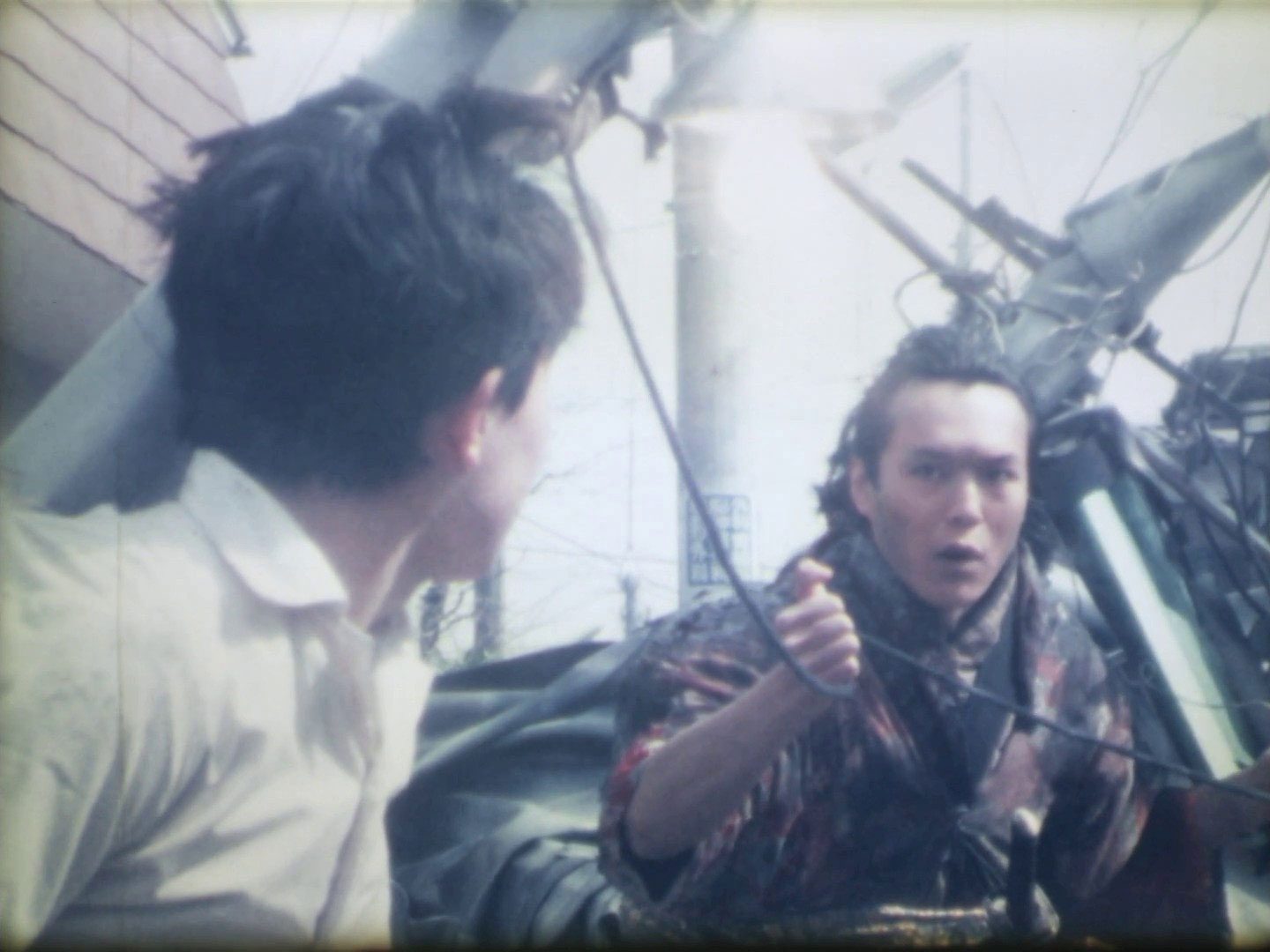 “History repeats itself. And that’s a fact.” – The Adventure of Denchu-Kozo (1987)
“History repeats itself. And that’s a fact.” – The Adventure of Denchu-Kozo (1987)
Throughout Tetsuo: The Iron Man, we’re shown a TV with another movie playing on it. That other movie is this 47-minute short from two years earlier about a boy with an electricity pylon growing out of his back (naturally) who invents a time machine that summons him 25 years into the future (by way of a glowing vagina cave made of garbage bags) where he has to fight a trio of vampires who have blacked out the sun.
So, The Matrix was a remake of The Adventure of Denchu-Kozo, is what I’m saying. A super sentai flick as seen through Tsukamoto’s particular vision of grungy bio-tech, sweaty carnality and speed-freak editing tricks, The Adventure of Denchu-Kozo plays like a proof-of-concept for most of what Tsukamoto was about to do with Tetsuo, even while that film is basically a body horror flick and this one is almost an absurdist comedy – if we have to pigeonhole them into genres at all, which we can’t, because they’re all over the damn place.
Naturally, the vampires here are made up of similar bio-tech to what we’ll see in Tetsuo, and they’ve harvested and raised a human child into a (nearly) adult woman who they keep hooked to a bunch of tubes and wires to make their “Adam Special,” a machine that will black out the sun permanently. And, of course, there’s a lot of psychosexual to-do made of the phallic nature that electric pylon, the vaginal time tunnel, waiting for the girl hooked to the machine to “mature” into a woman, and so on.
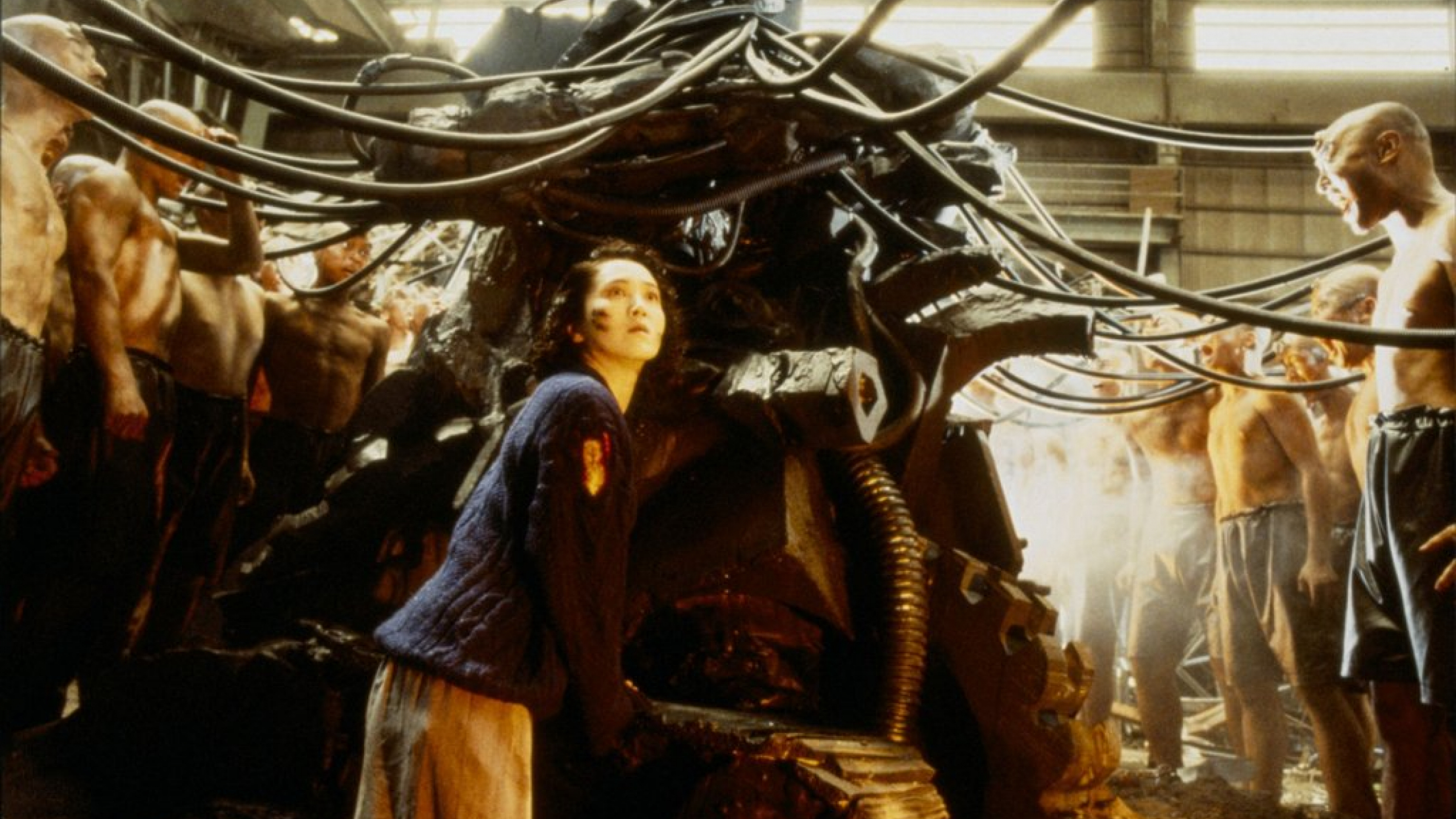
“Something’s going to be destroyed.” – Tetsuo II: Body Hammer (1992)
Less an actual sequel than a spiritual one, Tetsuo II reunites Tomorowo Taguchi and Shinya Tsukamoto for more metal fetish shenanigans, in this case about a guy who can transform his body into guns. While the original Tetsuo is often tossed in with cyberpunk flicks, this one is definitely trying harder to be one, as evinced by all the long coats, sunglasses and blue filters.
Gone is the grainy black-and-white of The Iron Man. Tetsuo II is in color and boasts a considerably bigger budget, even though the special effects are maybe actually worse because of it, proving that bigger isn’t always better, especially for avant-garde stuff like this.
If Tetsuo was Tsukamoto’s take on a monster movie, then Body Hammer is his answer to early superhero flicks like RoboCop or Darkman (which had come out just two years before). It’s still plenty saturated and frenetic and psychosexual and weird, but it feels at once more ambitious and less like it has anything to say, though the ending, echoing, as it does, the culmination of The Iron Man, while upending the finale of, say, Cronenberg’s The Fly, is a nice touch.
The low-key “athleticism as transhumanism” themes of Tetsuo are back in force here, as sweaty dudes work out in a foundry, their heaving bodies simulating the pistons of industrial machines. There’s also plenty of imagery relating to both the chaos and isolation of urban life; in keeping with Body Hammer’s more cyberpunk ambitions.
Nothing that happens here is ever really explained, per se, though we get enough information to put the pieces together. The bad guys are a kind of machine-worshipping bodybuilder cult of skinheads, led by a guy who can turn his arm into a gun because of (very unsettling) reasons. They kidnap the wrong kid when they abduct our protagonist’s son, leading to a particularly grisly child death that pulls absolutely no punches – one that will unexpectedly be echoed in one of Tsukamoto’s later, more restrained films.
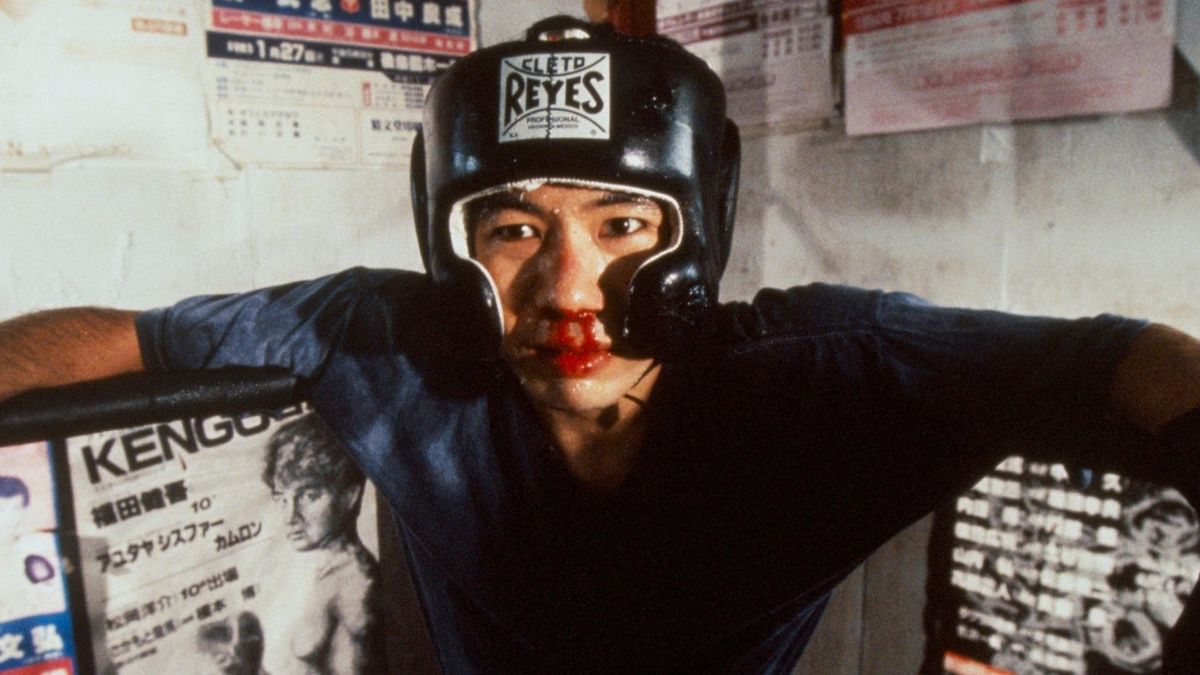
“I’ll even beat the shit out of everyone you know until you die.” – Tokyo Fist (1995)
Sorry, David Fincher and Chuck Palahniuk, but Shinya Tsukamoto did Fight Club better, and also four years earlier. (Okay, one year before the novel.)
Finally, all the pieces come together into one beautiful, brutal, frenetic, bloody, sweaty, claustrophobic masterpiece. I get why Tetsuo is the film that became famous, but if Tokyo Fist isn’t Tsukamoto’s masterwork, then I have got some good damn films ahead of me.
Shot more like a horror movie than any of Tsukamoto’s more horrific flicks, Tokyo Fist has the plot of an Oscar-caliber drama, as put through a blender with a Korean revenge film, even though the flowering of that genre was still half-a-decade away. Plus, there are still plenty of Tsukamoto’s by-now trademark themes of sadomasochism and athleticism-as-transhumanism, including an opening shot in which a bunch of boxers practicing looks like a rave.
On Letterboxd, user COBRARocky called it, “The only horror film about boxing,” which seems like it can’t possibly be true, but I also can’t think of another one. And if it’s a horror movie (which it is), then the monster is toxic masculinity.
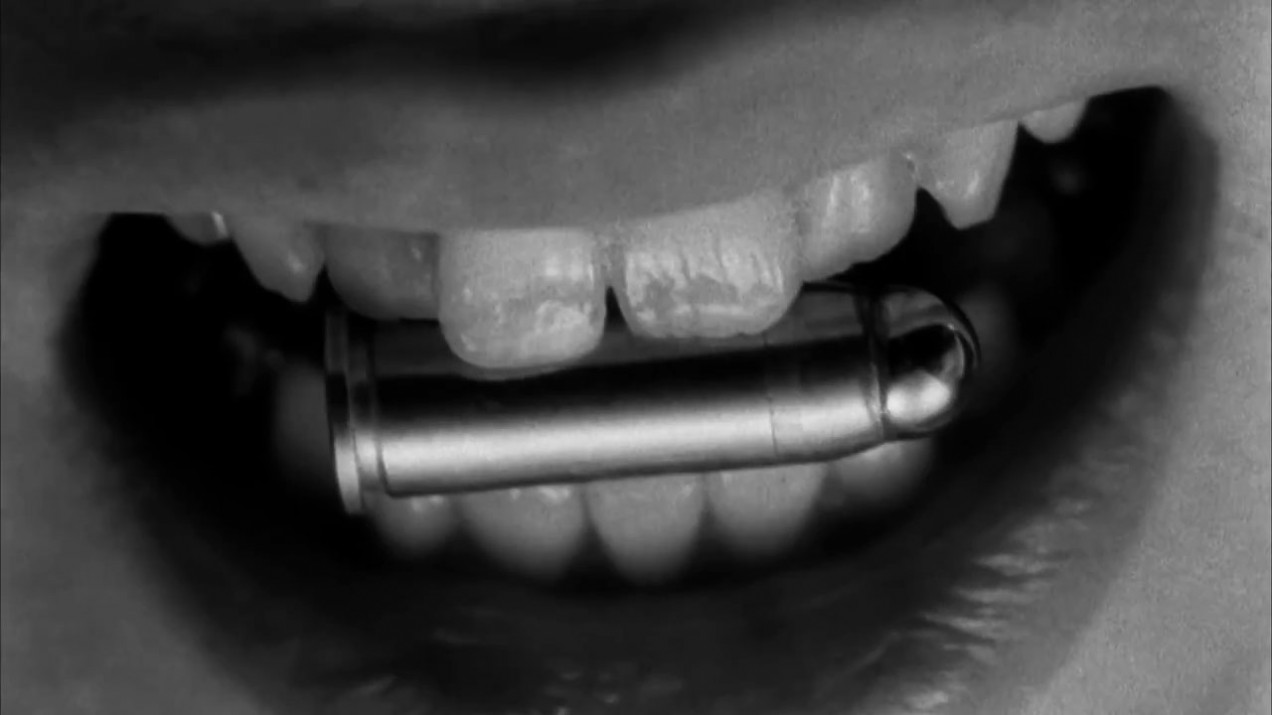
“It ain’t a Utopia here.” – Bullet Ballet (1998)
Gun porn in not quite the most literal possible sense, Bullet Ballet is, like most of Tsukamoto’s porn, far more sadomasochistic and horrifying than titillating. One of the essays in the nice little hardcover book that accompanies the Blu-ray set claims that the sex in at least Tsukamoto’s early films is always destructive (true) and rarely pleasurable.
It’s that second part I don’t necessarily agree with. I think the characters in Tsukamoto’s films are pretty much always people who can only take pleasure – or, indeed, feel much of anything at all – through destruction; often of others, almost always of the self.
That’s certainly the case in Bullet Ballet, which follows Goda – played by Tsukamoto himself – as he goes looking for a gun with which to kill himself after his girlfriend takes her own life (off camera). What follows is, as the back of the box proclaims, a tragic farce that “immerses the viewer in the lightless depths of human suffering.”
If that doesn’t sound like your kind of thing, you should maybe stop watching Tsukamoto movies at this point, if you haven’t already. Once more, a bunch of deeply damaged people are crashing into one another in the dark underbelly of urban life, scratching around in an attempt to find some sort of meaning through self-destruction. Shot in “stark” (the back of the box again) black-and-white, Bullet Ballet captures the same confidence and brutal poetry as Tokyo Fist, even if the results are a lot more muddled this time around.

“One must find something to live for.” – A Snake of June (2002)
A literal blue movie, Tsukamoto’s most blatantly erotic film so far trades in the gritty black-and-white of Tetsuo and Bullet Ballet for a perpetual blue filter and the accompaniment of a never ending rainstorm. While all of Tsukamoto’s films have been psychosexual in the extreme, this is the first one that’s been quite so overtly about sex.
For its first third, this tale of a counselor at a suicide hotline and the photographer who becomes obsessed with her is a Hitchcockian suspense film – and also maybe the closest Tsukamoto has come to a masterpiece this side of Tokyo Fist. After that, though, things take a turn for the weirder and the film kind of loses its way. Or maybe it just lost me.
Hitchcock gets traded in for Lynch and maybe even a little bit of Saw or Seven before all is said and done. But this is also Tsukamoto, and so he has more sympathy and empathy for even his most damaged characters than another director might.
The rain never lets up, pounding on the film and our eardrums as it pounds on the tender psyches of the protagonists. It all definitely seems like it means something, even if, when a roomful of salarymen are on their knees, watching what might be a snuff film peepshow through the wrong end of a funnel, I’d be hard pressed to tell you what, exactly.

“I wonder, then, where the soul lives.” – Vital (2004)
Is there anything that seems like a more perfect fit for Tsukamoto’s consistent obsession with people who can only make connections by inflicting or suffering harm than the story of a guy with amnesia who dissects the body of the girlfriend he can’t remember – who died in the same accident that cost him his memory – in a bid to reconnect with his life?
Yet, for all its morbid premise, Vital is Tsukamoto at his most restrained (thus far, anyway) and least horrific. There’s also less psychosexual stuff going on than you might imagine, in spite of a recurring choking fetish motif that will also make an unexpected return appearance more than decade later in Killing.
Though most horror movies would kill for its soundscape, Vital leaves the horrific by the wayside, along with most of Tsukamoto’s usual visual motifs and even the lion’s share of the gore. The majority of the flick may take place in the dissection theater of a medical school, but the gruesomeness of the subject matter is handled with surprising taste, all things considered.
This may be Tsukamoto at his most reserved up to this point, but the problem is that the most reserved Tsukamoto just comes perilously close to being an art movie that anyone could have made, which you certainly can’t say about any of the other movies in this set so far. Luckily, perilously close still isn’t quite there yet, and Vital may be at its best when its characters are just staring at a pattern on the elevator doors, or when the soundtrack is overwhelmed by the sounds of a businesslike dissection underway.
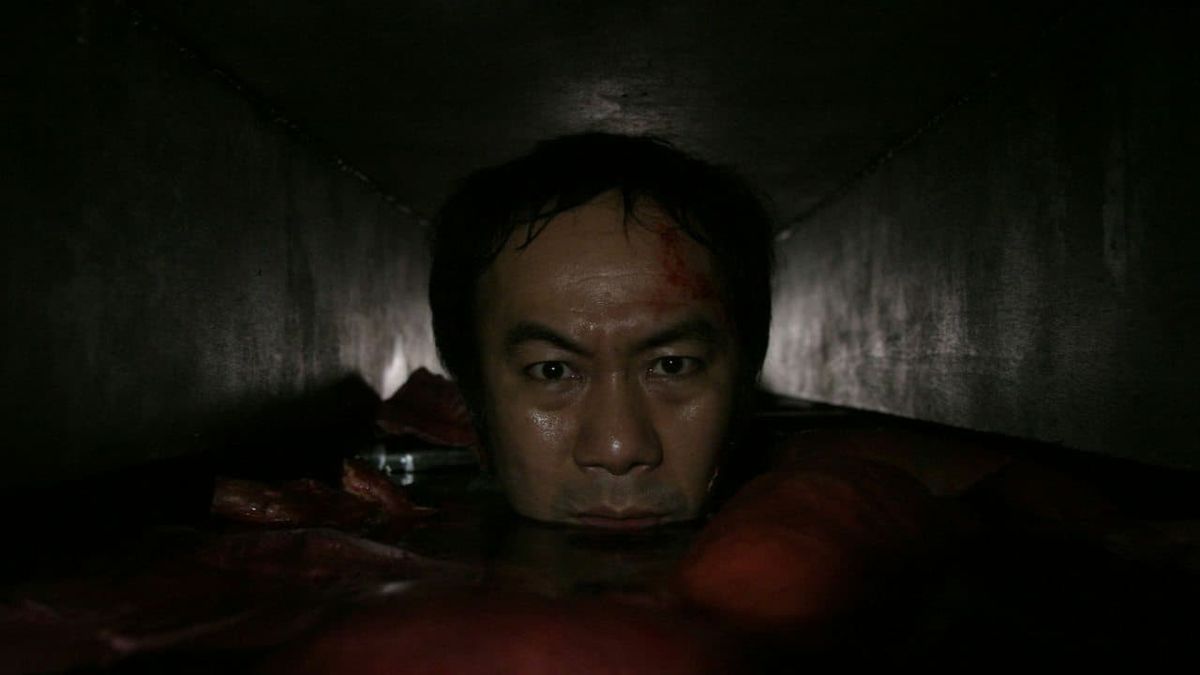
“I won’t feel pain if it’s a dream.” – Haze (2005)
If Vital was Tsukamoto at his most reserved, then Haze, a short film that was originally commissioned by South Korea’s Jeonju International Film Festival, is the most overtly genre flick in this set. As torture porn goes, it may be more “Pit and the Pendulum” than Hostel, but it is unequivocally horror in a way that doesn’t resist classification as much as even Tsukamoto’s most horrific early work.
Shot on digital, this painfully claustrophobic tale of a man who wakes up in a cramped, grimy maze is also an endurance test, even at only 49 minutes. (The original festival cut was only 24.) And, given its subject matter, maybe it should be…
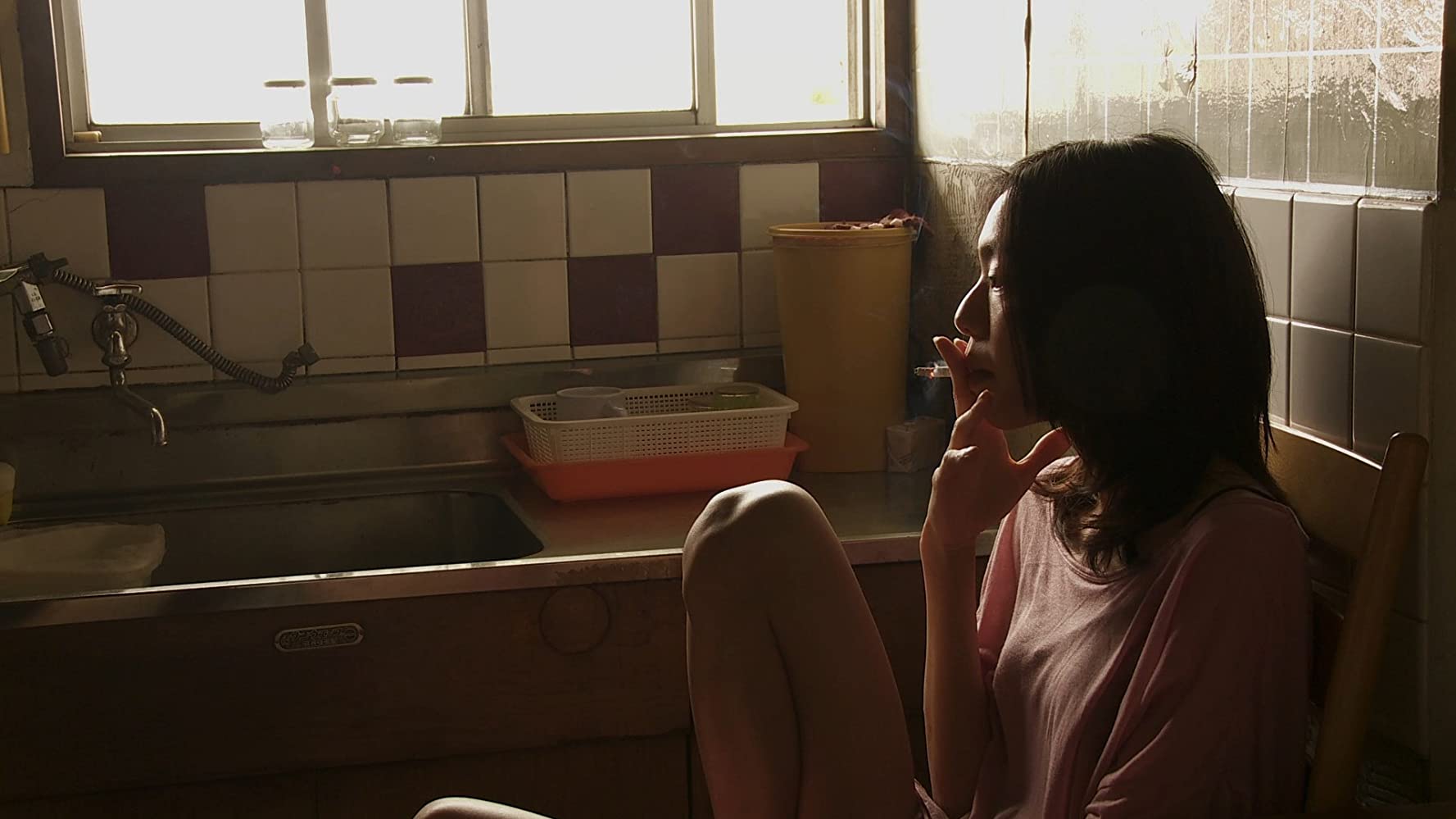
“I don’t cut my body to die.” – Kotoko (2011)
Conceived as a showcase/vanity project with the pop star Cocco, who co-writes and stars, Kotoko finds Tsukamoto abandoning even the pretense of genre entirely to tell an art house story about a single mother coping (or not) with untreated mental illness.
There are certainly thematic threads that tie Kotoko to Tsukamoto’s previous films, including an opening sequence of Cocco dancing that could have been lifted straight out of one of the dream memories of Vital. Tsukamoto himself shows up as a novelist who (maybe?) lets the eponymous Kotoko turn him into a punching bag as an alternative to self-harm, and Kotoko’s visions occasionally allow the director to indulge in some gore – including that gruesome child murder callback I mentioned. But for the most part, we’re in pure Oscar-bait territory here.
The depiction of mental illness is harrowing and painful, and there’s no denying that what remains of Tsukamoto’s stylistic tics work well in service of the subject matter. Shot almost entirely on digital video with handheld cameras, the close-ups of Kotoko are as raw and jarring as anything in Haze. The problem is – at least for me – if Vital was Tsukamoto skating perilously close to a movie that anyone could have made, Kotoko is probably him veering over that line.
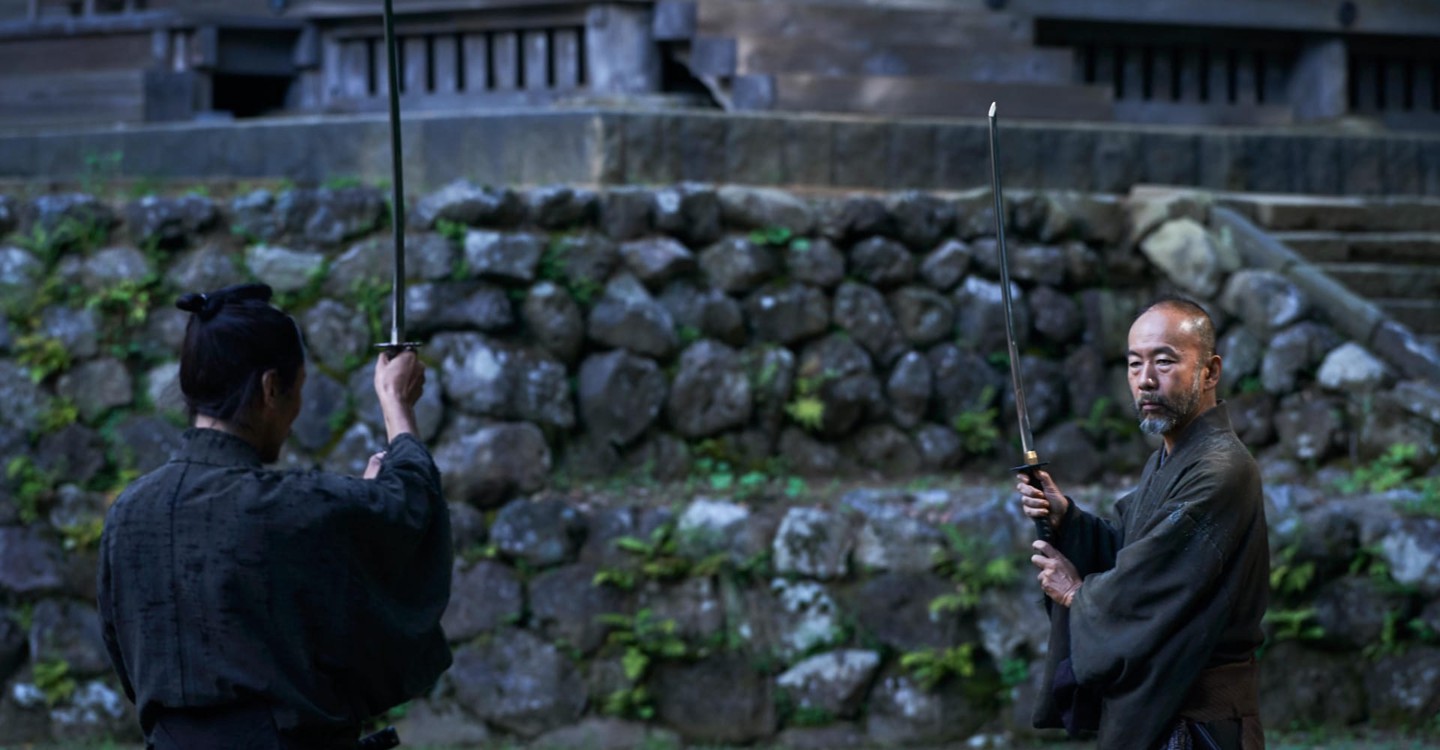
“Reflect on your life a little.” – Killing (2018)
“Sooner or later, most Japanese directors with long, successful careers make one or more films set in the samurai days.” So begins the essay about Killing at the back of the hardcover book that accompanies the admirably loaded Blu-ray set from Arrow Video, which goes on to call this 2018 film – making its home video debut here – Tsukamoto’s “anti-samurai samurai movie.” Which is also accurate enough.
Set during the end of the Edo period, Killing may have more in common with a picture like The Witch than the samurai epics of old. There is no honor here, only blood and mud, suffering and degradation and filth. “I wanted the film to be the antithesis of the heroism that we’re used to seeing in samurai films,” Tsukamoto apparently said at a post-screening Q&A at the Foreign Correspondents’ Club of Japan.
This is reflected in our pacifistic protagonist, a master swordsman who has never killed, played by Sôsuke Ikematsu, and in his foil, the seemingly-wise samurai (played, once again, by Tsukamoto himself) who represents the warrior’s code – and reduces that code down to its most fundamental law: “If you can’t kill, your sword is worthless.” Our protagonist’s pacifism fails him, and his expertise with a sword leaves him broken, while Tsukamoto’s character becomes a monster and the closest thing the film has to a villain.
Tsukamoto has said that he wanted to make a movie not merely critical of the heroism of samurai flicks, but equally critical of Japan’s role in World War II, represented here by the villagers who cheer on the bloodshed of the samurai, until it comes to their doorstep and they can no longer look away from its violence and ugliness. It’s easy enough to make an anti-killing movie; tougher, perhaps, to make a film this critical of the heroism we too often ascribe to the act.
At the end of the day, those who just want ten installments of Tetsuo: The Iron Man may find themselves disappointed in this set’s genre variations and gradual coalescence into less frenetic storytelling, but fans will also probably just be happy to have Tetsuo and its early ilk in such a definitive edition. For those who are coming in cold, Tsukamoto’s flicks are a bucket of ice water to the face, and certainly not for all tastes, although Tokyo Fist, at the very least, is a genuine classic, and there’s not an uninteresting film in the bunch, with the possible exception of Kotoko, and even that’s being harsh.




